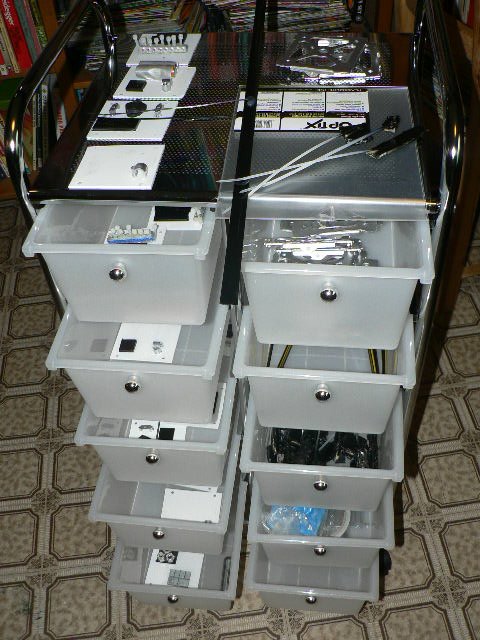The process of prototyping and mockups is a standard part of engineering. The framework for doing so in an interesting manner is entirely based in the world of games.
The game framework is that CubeSat builders are formed into teams. We're doing it as a 2-day high school workshop, but you could do it as a four-hour live action roleplaying session (LARP). After the initial background and briefings, there's a time limit for the actual build. The final builds are collected and graded, with a winning design being selected. We debrief on the process, on what were the good and bad in the various designs, and on what the next steps will be.
And, if you're part of our Capitol College team, we then actually build your Cube that day and fly it on a high altitude balloon as a first flight test of concept. It helps to have a colleague who is an astronautical systems engineer. Engineering is magic!
Some specifications are in order. A CubeSat is a very small satellite (picosatellite) shaped like a cube and intended for orbit. It has an outer dimension of 6 centimeters on each side, has to weigh in at under 1.5 kilograms, and must be self-sufficient in providing its own power, radio ability, and CPU/brain.
If you read the limit specifications above and think 'design challenge', you might be a gamer. I've often challenged people to think 'what would you fly in orbit'. That's the thought experiment, the seed of an idea.
The next step is to hand a group of people a stack of mockup CubeSat parts and then re-pose the question as 'what <em>can</em> you fly in orbit". What can you fit into the cube, staying within your weight and power and radio budgets, that can actually do something?
Clearly the best way to tackle this is an educational simulation. Currently called ProtoCube, here's the premise.
You are provided with the outside 'shell' or containing frame of a CubeSat. We also provide a replica Power board, CPU board, and Radio board, plus antenna. We also have a set of sensor mockups. Optional mockups for attitude control and thrusters are also available, should you require them.
All parts are accurate sizes and weights. Sensors use zipties to connect to the CPU board, so you will have to figure out your wiring as well. Spaces can be cut to size so you can figure out how you wish to place your boards. An ever-handy hot glue gun will play the role of the final bolts and fasteners, letting you quickly assemble a dream cube.
Finally, we have the most important part-- the blank board for your Payload, your Mission, your Raison de Cube. We have metal parts, plastic parts, even clay so you can sculpt the specific payload you wish to fly. What will it be?
Are you testing a new type of engine, or sending a hamster into space (and does your hamster get air?) Will you fly a laser for illegally aiming at aircraft (sorry, the launcher won't allow that) or a prototype ranging system for catching orbital debris?
Or are you flying... no, wait, that's impossible, that's... hmmm... actually, that just might work, in fact, it's brilliant!
Go ahead, surprise us. I'll documented the steps we took to create all our parts for this simulation, and likely also providing the full worksheets we used. How I will provide that may be in this column, in my other column (which is running a copy of this article), or via ProjectCalliope.com. Let me know if you wish more information, and in turn I'll also be posting the results from my colleague's July build workshop.
 |
| Setup for ProtoCube build workshop. You can see the 4 sample boards at top, with multiples stored in each bin so participants can 'shop' for their pieces |
Until next time,
Alex
ProjectCalliope.com





Comments